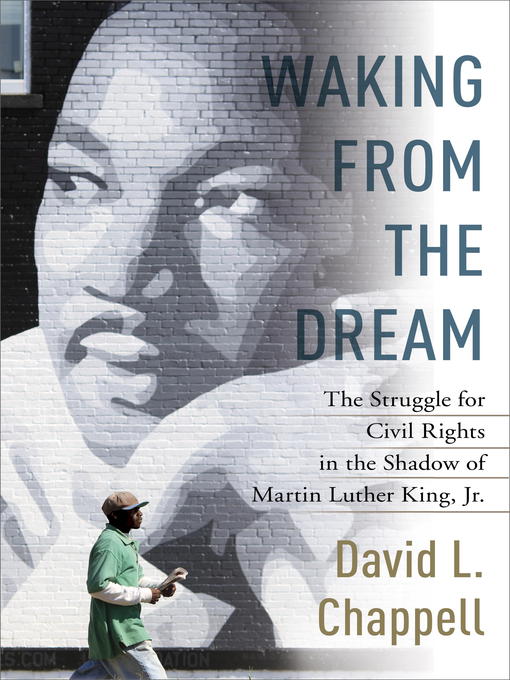
Waking from the Dream
The Struggle for Civil Rights in the Shadow of Martin Luther King, Jr.
کتاب های مرتبط
- اطلاعات
- نقد و بررسی
- دیدگاه کاربران
نقد و بررسی

November 11, 2013
“After King’s death,” University of Oklahoma historian Chappell (A Stone of Hope) asserts, “his survivors in the movement had some lasting achievements that deserve recognition,” five of which he focuses on here: the Civil Rights Act of 1968; the National Black Political Conventions of 1972 and 1974; the Humphrey-Hawkins Full Employment Act of 1978; the establishment of Martin Luther King, Jr. Day, and Jesse Jackson’s 1984 and 1988 presidential campaigns. Chappell’s assessment is mixed. For example, he asserts that the Civil Rights Act “had no memorably singular, decisive world-changing effect.” In delineating the National Political Conventions, he concludes that the “quest for black political solidarity aground.” Legislative achievements represent the more solid successes, and Jackson’s candidacy, he concludes, “had been for better or for worse at the center of a decade of renewed advancement and momentum in civil rights.” Chappell diligently studies the internal organizational machinations and the external press reportage; he pays welcome attention to Coretta Scott King’s role in the “post-King era.” In a rather dark conclusion, Chappell details Rev. King’s “extramarital affairs and academic dishonesty.” 16-page photo insert. Agent: Sandra Dijkstra, Sandra Dijkstra Literary Agency.

November 1, 2013
Astute contemporary history of the civil rights movement in the years after the assassination of Martin Luther King Jr. Though many books have focused on the period from 1954 to 1968, bookended by Brown v. Board of Education and King's tragic death, there has been less emphasis on the period after 1968. Chappell (Modern American History/Univ. of Oklahoma; A Stone of Hope: Prophetic Religion and the Death of Jim Crow, 2004) helps to provide a corrective by delivering what could be considered a series of linked essays covering a range of themes on the continuing fight for racial equality in the last four-plus decades. Beginning with the largely overlooked Civil Rights Act of 1968, or Fair Housing Act, which Congress enacted just a week after King's death, Chappell shows how for a few years the movement seemed unmoored and leaderless even as there were real efforts to continue the work of the so-called "Classical Phase" of the struggle. By the late 1970s and into the '80s, issues such as full employment and the establishment of a Martin Luther King Jr. Day took central stage. During this time period, former King confidant Jesse Jackson worked tirelessly to become the pre-eminent black leader in America. Chappell takes Jackson seriously as a historical figure, reminding readers that his two presidential campaigns in the '80s were more than just sideshows. This book will hopefully serve to push other historians to pick up where Chappell has left off. The author oddly leaves out any serious discussion of the American anti-apartheid movement against South Africa, and he overlooks significant developments in the history of Black Power and the Black Panther Party. Nonetheless, as a foray into still largely unexplored terrain, Chappell's book is vital. The movement did not die with King. Chappell effectively shows how the struggle continued even as the message seemed to fragment.
COPYRIGHT(2013) Kirkus Reviews, ALL RIGHTS RESERVED.

October 15, 2013
The assassination of Martin Luther King Jr. in 1968 left the civil rights movement in search of a strong leader and lively debate about how his legacy would be remembered. Civil rights scholar Chappell chronicles the fits and starts of continued efforts at civil rights that are uncelebrated but nonetheless pushed forward King's agenda. Among those efforts are the campaign for a national holiday to honor King, fair housing legislation and the Humphrey-Hawkins full employment bill (though the original intentions of both were watered down), and Jesse Jackson's two presidential campaigns. Chappell details the contentious debates on nationalism versus integration and the value of a single leader versus institutional viability, which led to the short-lived National Black Political Convention and the more enduring Congressional Black Caucus. Chappell details the failed efforts as much as the successes, highlighting the valuable lessons learned as groups and individuals renewed their strategies and determination to move forward. Emphasizing the rarity of such history-changing acts as the civil rights legislation, he notes that the struggle for equality is incremental and eternal.(Reprinted with permission of Booklist, copyright 2013, American Library Association.)

March 1, 2013
Published to coincide with the 50th anniversary of Martin Luther King Jr.'s "I Have a Dream" speech, this revisionist work has a double-edged title. It examines not only the Civil Rights struggle but the struggle of many--activists, scholars, and more--to control King's legacy and image. Leading civil rights authority Chappell, who wrote the highly regarded A Stone of Hope, is set to make us think.
Copyright 2013 Library Journal, LLC Used with permission.

























دیدگاه کاربران